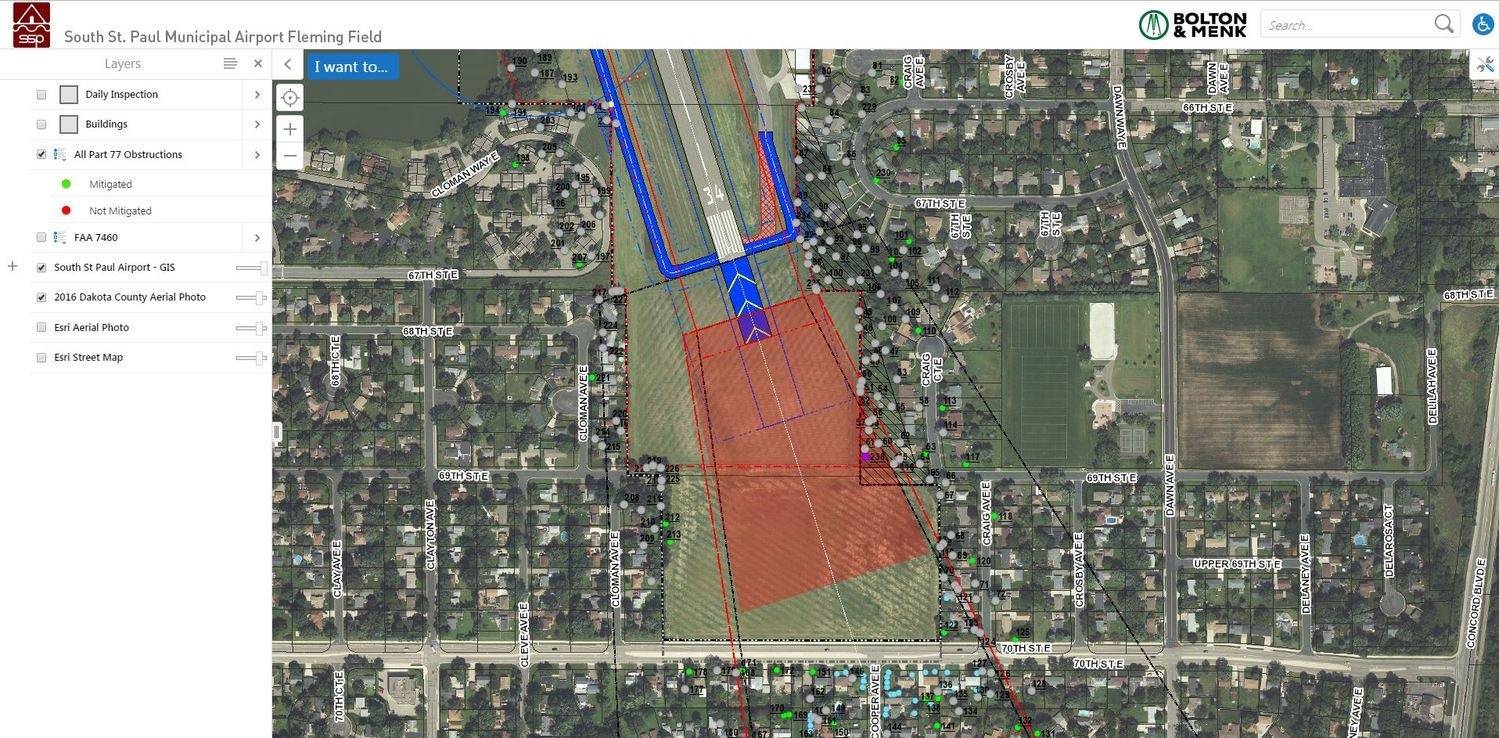
Innovative Tools in Airport Planning
Incorporating the latest technology in developing an airport layout plan can provide crucial information to decision-makers in a visual and interactive manner. Our aviation services group uses innovative tools to think outside the box during the airport planning process and beyond. We create successful outcomes for you by integrating unmanned aircraft systems (UAS) and geographic information systems (GIS) technology into our airport projects.
UAS IMPLEMENTATION
Bolton & Menk’s innovation in airport planning is based on using small UAS aircraft to capture high-quality aerial imagery during planning, design and construction. This imagery can be used to provide basemaps for ALPs and interactive GIS interfaces, completing airspace reviews, estimating pavement maintenance projects, and providing post-construction airport imagery. Using our fleet of UAS aircraft, our licensed pilots can fly over an airport and surrounding property to capture imagery within a few hours. Once processed, planning and engineering staff will review gathered imagery to evaluate existing airport conditions and develop alternatives to assess potential impacts in an interactive, three-dimensional GIS environment.
GIS INTEGRATION
Using GIS software, our staff provides airport sponsors an interactive experience by integrating various databases such as property parcels, pavement conditions, land-use zoning, and obstructions into a single interface. This interface allows users to see information in a detailed three-dimensional view. It allows the ability to compare airport alternatives and visualize safety critical surfaces and setbacks. Decision-makers will have a better understanding of the relationship between physical attributes on the ground, safety critical areas, and three-dimensional airspace. GIS software also allows airport sponsors to use UAS imagery to assess airport infrastructure in a more current environment than previously possible. If UAS imagery is gathered on a yearly or event-driven basis, sponsors can monitor airport conditions, assess maintenance projects and identify potential airport problems. The ability to integrate GIS into the decision-making process ultimately leads sponsors to make well-informed decisions on managing airport operations, as well as ensuring success for the airport’s future.
Using GIS software, our staff provides airport sponsors an interactive experience by integrating various databases such as property parcels, pavement conditions, land-use zoning, and obstructions into a single interface. This interface allows users to see information in a detailed three-dimensional view.  It allows the ability to compare airport alternatives and visualize safety critical surfaces and setbacks. Decision-makers will have a better understanding of the relationship between physical attributes on the ground, safety critical areas, and three-dimensional airspace. GIS software also allows airport sponsors to use UAS imagery to assess airport infrastructure in a more current environment than previously possible. If UAS imagery is gathered on a yearly or event-driven basis, sponsors can monitor airport conditions, assess maintenance projects and identify potential airport problems. The ability to integrate GIS into the decision-making process ultimately leads sponsors to make well-informed decisions on managing airport operations, as well as ensuring success for the airport’s future.
It allows the ability to compare airport alternatives and visualize safety critical surfaces and setbacks. Decision-makers will have a better understanding of the relationship between physical attributes on the ground, safety critical areas, and three-dimensional airspace. GIS software also allows airport sponsors to use UAS imagery to assess airport infrastructure in a more current environment than previously possible. If UAS imagery is gathered on a yearly or event-driven basis, sponsors can monitor airport conditions, assess maintenance projects and identify potential airport problems. The ability to integrate GIS into the decision-making process ultimately leads sponsors to make well-informed decisions on managing airport operations, as well as ensuring success for the airport’s future.
For more information on how our innovative technology can help your airport planning process, contact Ronald Roetzel, P.E.
